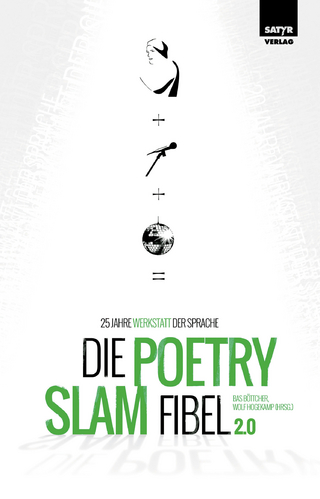
William Blake’s Divine Love
Visions of Oothoon
Seiten
2024
Routledge (Verlag)
978-1-032-70619-1 (ISBN)
Routledge (Verlag)
978-1-032-70619-1 (ISBN)
William Blake’s Divine Love explores the hermeneutical possibilities of Oothoon’s self-annihilation and the epistemological potential of her visual copulation by establishing an artistic and hagiographical heritage.
Despite the fact that William Blake summarises the plot of Visions of the Daughters of Albion (1793) in just eight lines in the prefatory ‘Argument,’ there are several contentious moments in the poem which continue to cause debate. Critics read Oothoon’s call to Theotormon’s eagles and her offer to catch girls of silver and gold as either evidence of her rape-damaged psyche or confirmation of her selfless love which transcends her socio-sexual state. How do we reconcile the attack of Theotormon’s eagles and the wanton play of the girls with Oothoon’s articulate and highly sophisticated expressions of spiritual truth and free love?
In William Blake’s Divine Love: Visions of Oothoon, Joshua Schouten de Jel explores the hermeneutical possibilities of Oothoon’s self-annihilation and the epistemological potential of her visual copulation by establishing an artistic and hagiographical heritage which informs the pictorial representation and poetic pronunciation of Oothoon’s enlightened entelechy. Working with Michelangelo’s The Punishment of Tityus (1532) and Gian Lorenzo Bernini’s Ecstasy of Saint Teresa (1647–51), Oothoon’s ecstatic figuration reflects two iconographic traditions which, framed by the linguistic tropes of divine love expressed within a female-centred mystagogy, reveal the soteriological significance of Oothoon’s willing self-sacrifice.
Despite the fact that William Blake summarises the plot of Visions of the Daughters of Albion (1793) in just eight lines in the prefatory ‘Argument,’ there are several contentious moments in the poem which continue to cause debate. Critics read Oothoon’s call to Theotormon’s eagles and her offer to catch girls of silver and gold as either evidence of her rape-damaged psyche or confirmation of her selfless love which transcends her socio-sexual state. How do we reconcile the attack of Theotormon’s eagles and the wanton play of the girls with Oothoon’s articulate and highly sophisticated expressions of spiritual truth and free love?
In William Blake’s Divine Love: Visions of Oothoon, Joshua Schouten de Jel explores the hermeneutical possibilities of Oothoon’s self-annihilation and the epistemological potential of her visual copulation by establishing an artistic and hagiographical heritage which informs the pictorial representation and poetic pronunciation of Oothoon’s enlightened entelechy. Working with Michelangelo’s The Punishment of Tityus (1532) and Gian Lorenzo Bernini’s Ecstasy of Saint Teresa (1647–51), Oothoon’s ecstatic figuration reflects two iconographic traditions which, framed by the linguistic tropes of divine love expressed within a female-centred mystagogy, reveal the soteriological significance of Oothoon’s willing self-sacrifice.
Joshua Schouten de Jel is a doctoral graduate from the University of Plymouth, UK. He is the author of articles on William Blake, Mary Shelley, and Jean-Jacques Rousseau and is also the author of Blake and Lucretius: The Atomistic Materialism of the Selfhood (Palgrave, 2021).
Contents
List of Abbreviations
Chapter 1: Introduction
Chapter 2: ‘The nakedness of women is the work of God’
Chapter 3: The Tityus Tradition after Michelangelo
Chapter 4: Divine Love: The Transverberation
Chapter 5: L’Estasi di Santa Teresa
Index
| Erscheinungsdatum | 19.03.2024 |
|---|---|
| Reihe/Serie | Routledge Studies in Romanticism |
| Zusatzinfo | 10 Halftones, black and white; 10 Illustrations, black and white |
| Verlagsort | London |
| Sprache | englisch |
| Maße | 152 x 229 mm |
| Gewicht | 508 g |
| Themenwelt | Literatur ► Lyrik / Dramatik ► Lyrik / Gedichte |
| Geisteswissenschaften ► Sprach- / Literaturwissenschaft ► Anglistik / Amerikanistik | |
| Geisteswissenschaften ► Sprach- / Literaturwissenschaft ► Literaturgeschichte | |
| ISBN-10 | 1-032-70619-8 / 1032706198 |
| ISBN-13 | 978-1-032-70619-1 / 9781032706191 |
| Zustand | Neuware |
| Informationen gemäß Produktsicherheitsverordnung (GPSR) | |
| Haben Sie eine Frage zum Produkt? |
Mehr entdecken
aus dem Bereich
aus dem Bereich
Deutsche Gedichte aus zwölf Jahrhunderten
Buch | Hardcover (2023)
C.H.Beck (Verlag)
CHF 41,90
25 Jahre Werkstatt der Sprache
Buch | Softcover (2020)
SATYR Verlag
CHF 27,90


